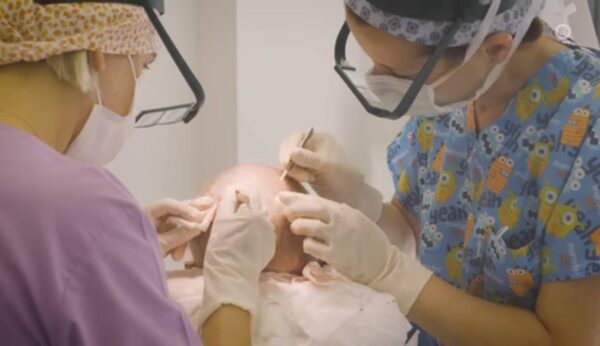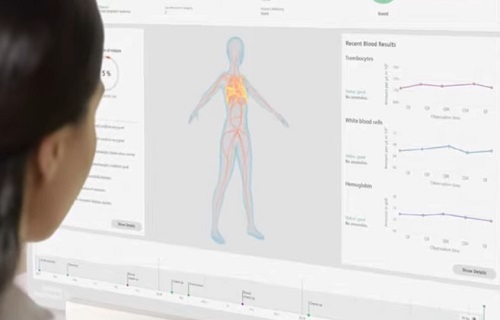Sometimes, out of desperation, people seek different ways from modern medicine’s recommendations, which is quite normal. Sometimes, when we or a loved one is diagnosed with a nasty or incurable disease, we look for ways to do everything we can to get rid of the disease, instead of accepting the diagnosis. These searches may lead to wrong decisions that may affect us incorrectly or adversely affect the treatment. Unfortunately, there are many people in our world who defraud people in this way by giving hope. Therefore, we must be very careful in the research and decision-making process about complementary or alternative medicines and therapy.


Complementary and alternative medicine (CAM) means is diverse group of healthcare practices and products that are not typically considered to be part of conventional medicine. Conventional medicine, also known as Western or allopathic medicine, refers to the medical practices and treatments that are taught in medical schools and typically offered by healthcare providers in hospitals and clinics.
CAM practices and products may include acupuncture, chiropractic, herbal medicine, homeopathy, massage therapy, naturopathy, yoga and other mind-body practices, and various dietary supplements and other natural products. These practices and products are often used in conjunction with conventional medical treatments, or they may be used as an alternative to conventional medicine. You or your counselor will talk and decide which one is for you.
The use of CAM is quite common in many parts of the world. In the United States, for example, it is estimated that about 40% of adults use some form of CAM. However, the effectiveness and safety of many CAM practices and products have not been extensively studied or proven through scientific research, and there is ongoing debate about their effectiveness and role in healthcare. You should select trustworthy cam givers.
The prevalence of complementary and alternative medicine (CAM) use varies widely depending on the country and the specific CAM practices or products being considered. In the United States, it is estimated that about 40% of adults use some form of CAM. This includes the use of natural products (such as herbal supplements), mind-body practices (such as meditation or yoga), and manipulative and body-based practices (such as chiropractic or massage therapy).



CAM use is more common among certain groups of people, such as those who are older, have chronic health conditions, or are highly educated. In addition, CAM use is more common among people who are seeking relief from chronic pain or stress or who are looking for ways to improve their overall health and well-being.
It is important to note that the use of CAM does not necessarily mean that an individual has abandoned conventional medicine. Many people use both CAM and conventional medicine to manage their health. However, it is important to discuss the use of CAM with a healthcare provider, as some CAM practices and products may interact with conventional medications or have potential risks.
Types of CAM Therapy
There are many different types of complementary and alternative medicine (CAM) therapies and they can be broadly categorized into several groups. Here are some examples of CAM therapies:
- Acupuncture: a form of traditional Chinese medicine that involves the insertion of thin needles into specific points on the body to restore balance and promote healing.
- Chiropractic: a form of manual therapy that focuses on the diagnosis and treatment of neuromuscular disorders, with the goal of improving spinal function and overall health.
- Herbal medicine: the use of plants or plant extracts for medicinal purposes, either as teas, tinctures, or supplements.
- Homeopathy: a system of medicine that involves the use of very dilute preparations of substances that are believed to cause symptoms similar to those being treated.
- Massage therapy: the use of various techniques, such as kneading, rubbing, and pressing, to manipulate the soft tissues of the body to promote relaxation and improve circulation.
- Naturopathy: a system of healthcare that emphasizes the use of natural remedies, such as herbs and dietary changes, to support the body’s ability to heal itself.
- Yoga and other mind-body practices: various techniques that involve physical postures, breathing exercises, and meditation, with the goal of improving physical and mental well-being.
Effectiveness and safety of CAM therapies can vary widely and many of these therapies have not been extensively studied or proven through scientific research. It is always important to discuss the use of CAM therapies with a healthcare provider. Some of these CAM therapies types and experts may not in your country or your region or could be illegal in some countries.



What is the Risks?
Like all medical treatments, complementary and alternative medicine (CAM) therapies can carry potential risks. It is important to discuss the use of CAM therapies with a healthcare provider, as some CAM practices and products may interact with conventional medications or have potential risks. CAM center and CAM thearips experience very important.
Here are some examples of potential risks associated with CAM therapies:
- Interactions with conventional medications: Some CAM therapies may interact with conventional medications, either enhancing or reducing their effectiveness or causing adverse reactions. For example, St. John’s wort, a herb commonly used to treat depression, can interact with many prescription medications and may cause serious side effects.
- Adverse effects: Some CAM therapies may cause side effects, such as allergic reactions, nausea, or dizziness. For example, herbal supplements may contain contaminants or be mislabeled, leading to potential health risks.
- Delay in seeking conventional medical treatment: Some people may rely on CAM therapies to the exclusion of conventional medical treatment, which can delay the diagnosis and treatment of serious conditions. For example, using herbal remedies to treat cancer may delay the use of effective treatments, leading to a worse outcome.
- Misleading claims: Some CAM practitioners may make exaggerated or misleading claims about the effectiveness of their treatments, leading people to forgo proven treatments or spend money on ineffective therapies.
It is important to remember that the use of CAM therapies should be guided by a healthcare provider and should not replace proven conventional medical treatments. It is always a good idea to be cautious and to do your own research before starting any CAM therapy.
Scientific Approach
The scientific approach to evaluating complementary and alternative medicine (CAM) therapies involves the use of rigorous research methods to determine the effectiveness and safety of these therapies. This typically involves conducting clinical trials, which are research studies that involve the systematic and controlled testing of a medical treatment or intervention in humans. Clinical trials are the gold standard for evaluating the effectiveness and safety of medical treatments, including CAM therapies.
There are several types of clinical trials, including randomized controlled trials (RCTs), which are considered the most reliable type of trial. In an RCT, participants are randomly assigned to receive either the experimental treatment (the CAM therapy being studied) or a comparison treatment (such as a placebo or the standard treatment). This helps to control for any biases or confounding factors that might affect the outcome of the study.
The scientific approach to evaluating CAM therapies also involves the use of other research methods, such as systematic reviews and meta-analyses, which involve the synthesis of data from multiple studies to provide a more comprehensive understanding of the effectiveness and safety of a particular CAM therapy.
It is important to note that the scientific study of CAM therapies can be challenging due to the inherent complexity of many CAM practices and the lack of standardization in the delivery of these therapies. However, the use of rigorous research methods can help to provide a more objective and reliable understanding of the potential benefits and risks of CAM therapies.
You Should Before :
It is very healpful to speak with a healthcare provider before starting any complementary and alternative medicine (CAM) therapy. Here are some reasons why:
- Safety: CAM therapies can carry potential risks, such as interactions with conventional medications or adverse effects. A healthcare provider can help to assess the potential risks and benefits of a particular CAM therapy and determine if it is appropriate for an individual’s specific health needs.
- Effectiveness: The effectiveness of CAM therapies can vary widely, and many of these therapies have not been extensively studied or proven through scientific research. A healthcare provider can help to evaluate the available evidence on a particular CAM therapy and determine if it is likely to be effective for a specific condition.
- Interactions with conventional treatments: Some CAM therapies may interact with conventional medications or treatments, either enhancing or reducing their effectiveness or causing adverse reactions. A healthcare provider can help to identify potential interactions and ensure that an individual’s healthcare regimen is safe and effective.
- Alternative treatment options: A healthcare provider can help to identify alternative treatment options, including conventional medical treatments, that may be more appropriate for an individual’s specific health needs.
It is always a good idea to be cautious and to do your own research before starting any CAM therapy. However, it is ultimately the healthcare provider who is best equipped to assess the appropriateness and safety of a particular CAM therapy for an individual.

